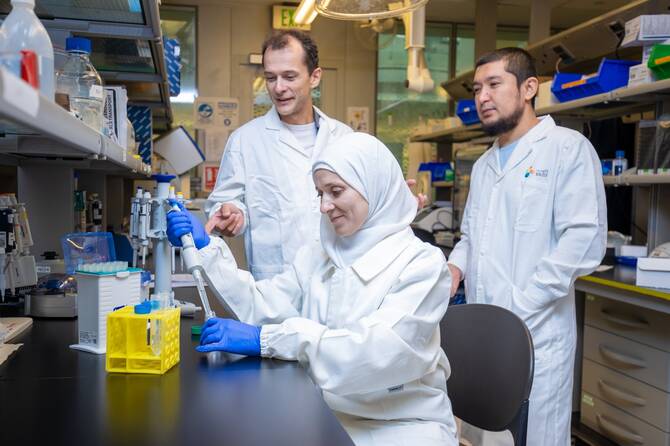
- ARAB NEWS
- 13 Aug 2025

RIYADH: A new study using Saudi and Japanese pangenome samples exclusively has revealed genetic insights relating to these two populations.
“Up to 12 percent of patients with genetic disorders go undiagnosed due to reliance on reference genomes that don’t reflect their population’s genetic background,” said Malak Abedalthagafi, professor at Tufts Medical Center and one of the lead authors of the study.
“By constructing population-specific pangenome graphs, we improve variant calling and help close this diagnostic gap.”
The pangenome is considered a powerful reference tool to study individual and group DNA.
Similar to how a map shows a person’s position in relation to their landscape, the pangenome allows researchers to compare a person’s genetic makeup with the full spectrum of genetic variation found across a population.
“Having worked on the Saudi genome for several years, contributing to this project marks a meaningful step in my commitment to advancing representation in genomics and ensuring precision medicine serves diverse populations,” Abedalthagafi said.
Fellow author of the study and KAUST Professor Robert Hoehndorf explained that building the graphs, which the study calls JaSaPaGe (Japanese Saudi PanGenome), using samples from two distinctive populations offers new health insights.
“Japan and Saudi Arabia are pretty much at the opposite ends of Asia and have been separated for a long time. It gave us a chance to study the effects of population-specific pangenome graphs on variant calling when populations do not match,” Hoehndorf said.
JIHS’ Yosuke Kawai, another author of the study, added that there were clinical benefits to be gained for both populations.
He said: “The joint development of a population-specific pangenome graph for the Japanese and Saudi Arabian populations addresses a critical gap in global genomic representation.
“By integrating diverse data from both countries, we have created a powerful resource that not only improves variant detection accuracy but also holds great potential for advancing precision medicine tailored to each population’s unique genetic landscape.”
The first human pangenome was reported in 2023, but none of the DNA samples collected were taken from individuals with Arab or Japanese descent, meaning it was constructed without representation from almost 10 percent of the world’s population.
The study was carried out by King Abdullah University of Science and Technology, Tufts University and the Japan Institute for Health Security.